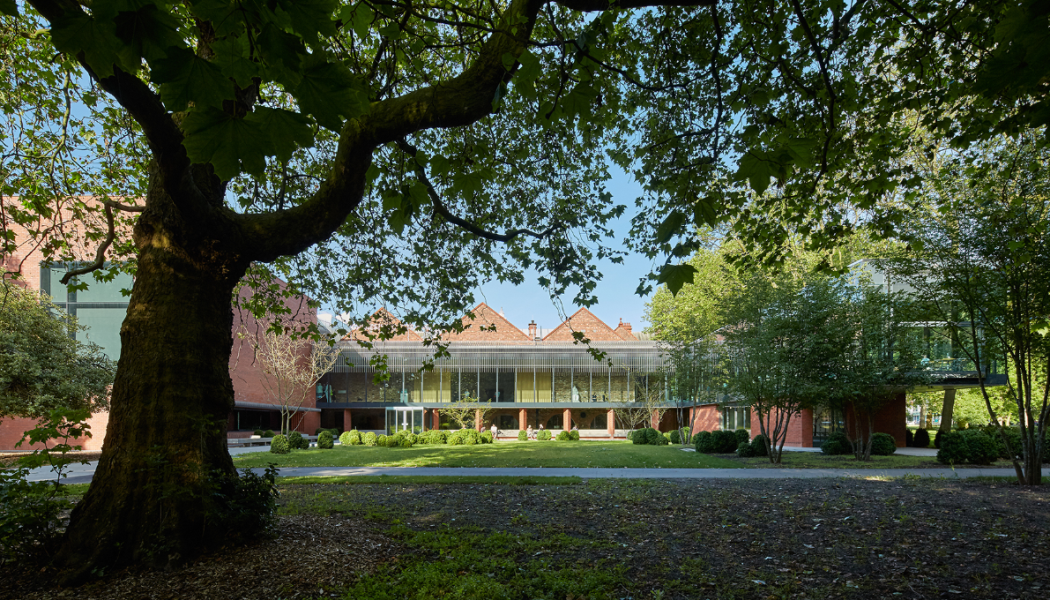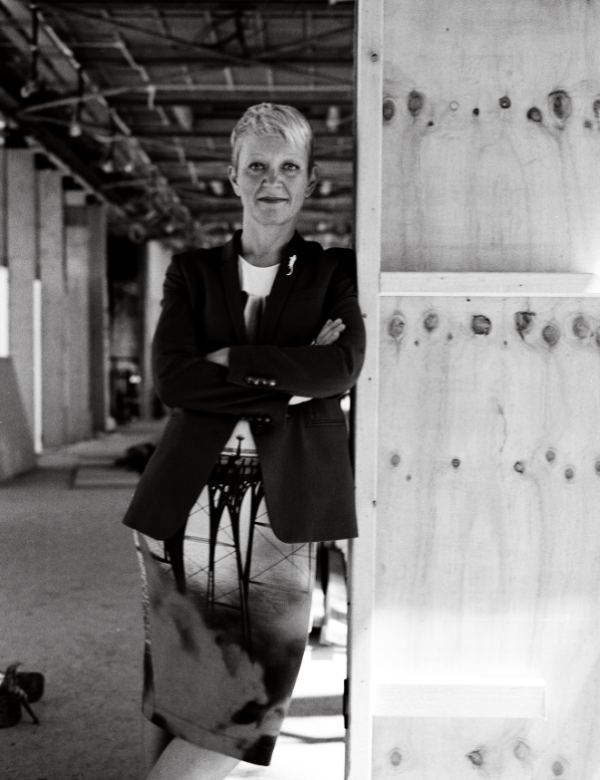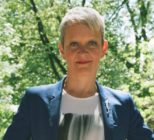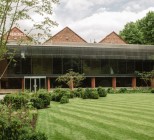How would you describe the first six months since reopening?
Momentous. We reopened on Valentine’s Day in spectacular fashion, with Cornelia Parker’s meteorite shower, triggered by a graphene sensor, created by Nobel prize winner Prof Kostya Novoselov, showcasing the creative genius of the University of Manchester, of which the Whitworth is a part, exploding over the Whitworth Park. With ten new exhibitions, a weekend of live music and performance art, and everything from creative workshops for children to early morning yoga, some 20,000 people came to see us over that opening weekend; since then, things haven’t really slowed down. From the incredible pairing of artist Gerhard Richter and composer Arvo Pärt during this summer’s Manchester International Festival to an extraordinary installation by the acclaimed Welsh artist, Bedwyr Williams, via architectural awards, our inclusion on the shortlist for this year’s Stirling Prize and, of course, being named the Art Fund’s Museum of the Year, it has been a wonderful few months.
What were the aims and objective of the redevelopment and do you think you’ve achieved them?
The aim of our £15m redevelopment was really quite simple: to introduce what we do to more people than ever before, and to connect the gallery with the park that it calls home. With new, park-facing spaces, our gardens in full bloom and over 230,000 visitors since we reopened – more than we received in a year prior to closure – we feel that we have achieved what we set out to do.
What does being Art Fund Museum of the Year mean to the Whitworth and what will the £100,000 prize money be spent on?
We’d spend it on something that’s really important to us. The gallery is on the doorstep of some of the most economically challenged communities in Manchester. It’s not very fashionable to talk about class, but those who are at the bottom of the economic scale quite often get overlooked – so we are spending the money on increasing the work we do to engage those communities, particularly those people who use the park but still don’t come into the gallery and who don’t – yet – see the Whitworth as “theirs”.
One of the first things I did as director of the Whitworth was to take down the fence that separated gallery and park. It was seen as a brave move by some - there was a feeling that the gallery needed to be “protected” from the city on its doorstep - but in reality the Whitworth needed to be opened up to the people for whom it was originally established: the people of Manchester
In what ways has the redevelopment improved the offering to visitors?
The Whitworth has been transformed. Where once we struggled to accommodate all that our visitors wanted to see and do, we can now cater for everyone. Children can enjoy messy, creative play in our learning studio, whose floor-to-ceiling doors open out onto the art garden and allow children to connect with nature as much as they do our collections. Our collections centre, staffed by volunteers, is a place where anyone can engage more fully with some of the 55,000 artworks we care for; since reopening we have held exhibitions curated here by, for example, older men from a local care home. Our study centre is almost always full of researchers and students, our café, which overlooks the park, full of visitors enjoying the view. Over the summer, the art garden has been alive with families, while the Grand Hall has resonated to the sounds of live hip hop, spoken word and electronica. There is yoga every Thursday, art walks in the park, and all this alongside the space to show ten exhibitions in spaces that range from intimate to breathtaking. The development has helped us realise the potential of the Whitworth, and has given both the collections and our visitors the building they deserve.
How has the new design improved the way the gallery works for staff?
In much the same way as for visitors: everyone working at the Whitworth now has the space and the facilities they need to do all that they want to do.
How have you been able to better engage with the communities around the gallery now that it opens up to the park?
One of the first things I did as director of the Whitworth was to take down the fence that separated gallery and park. It was seen as a brave move by some – there was a feeling that the gallery needed to be “protected” from the city on its doorstep – but in reality the Whitworth needed to be opened up to the people for whom it was originally established: the people of Manchester. Our development, then, was an opportunity to fully integrate the gallery into the park and now, on the roof, sits Nathan Colely’s neon artwork, aptly called Gathering of Strangers, while sculpture is scattered across our gardens and the park itself. Our new parkside entrance is enclosed by two glass wings that, extending out into the park, are deliberately transparent: you can see the expanse of green when you are inside but, importantly, when you stand in the park you can see people and the art inside.
What are the benefits of this openess?
What that means is that the Whitworth is welcoming in a way that it wasn’t before – and if you are, say, a pupil on your way to school at the academy on the other side of the park, or if you’re part of a family having a picnic, that sense of openness is absolutely essential.
But it takes much more than architecture – no matter how good it is – to develop new audiences. So we have a Cultural Park Keeper, for example, whose job it is to develop activities in the park specifically to engage those communities on our doorstep – those families having picnics, those kids on their way to school. Our learning team brings local schools to the gallery and turns pupils into cheerleaders, encouraging them to return, this time with their families in tow. One member of staff develops programmes with students from the two university campuses nearby, and others work with both staff and patients at the five hospitals across the road. The Whitworth is fortunate enough to be on the edge of a busy, diverse city and we continually look to find new ways of engaging all the communities on our doorstep, in ways that work for them.
What are the ambitions for the gallery for the next six months?
The next six months, and the six after that, we have one aim. Our development was not the end of something. It was just the start. MUMA’s incredible work has breathed new life into the Whitworth, and our aim now is to do justice to the building, to our collections and, importantly, to all our visitors – old and new.
Main Image
The Whitworth Art Gallery taken from the Whitworth Park this summer. By Alan Williams











